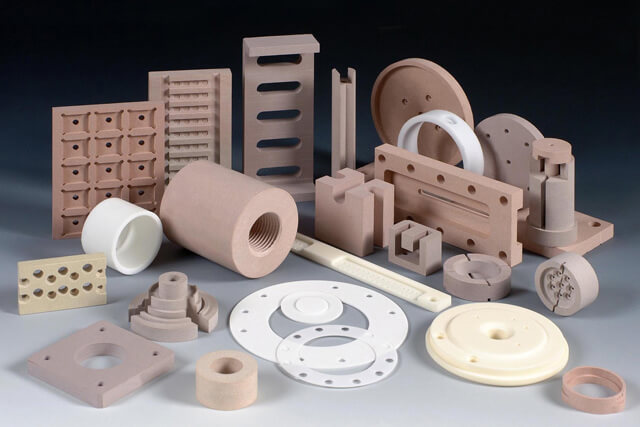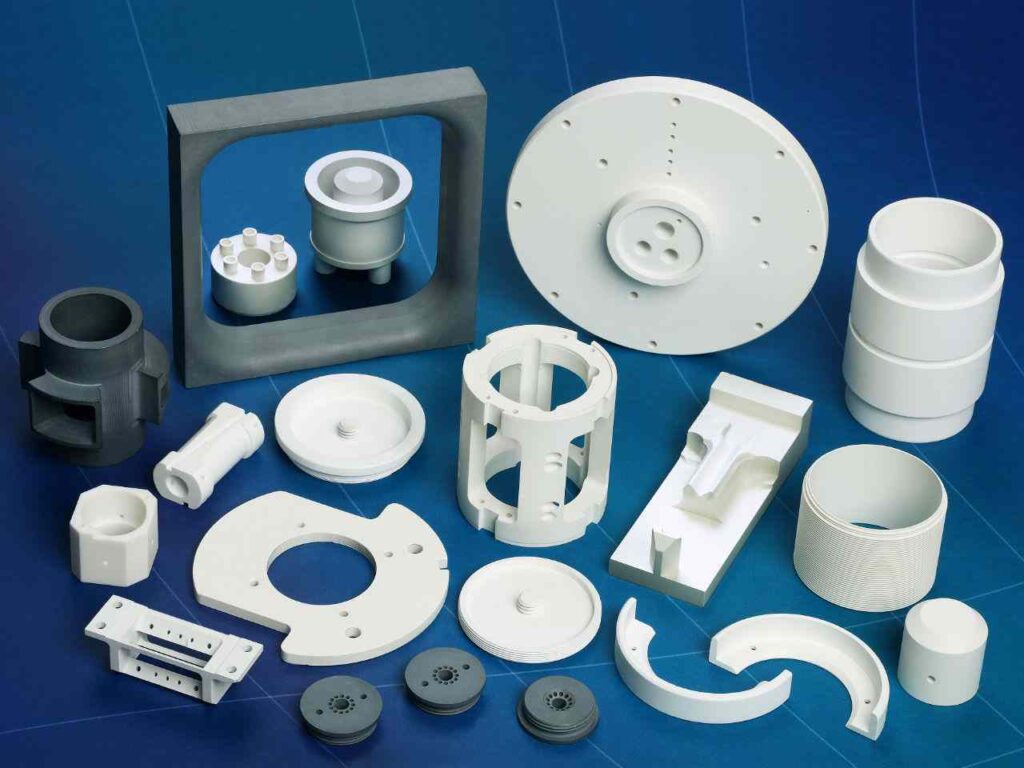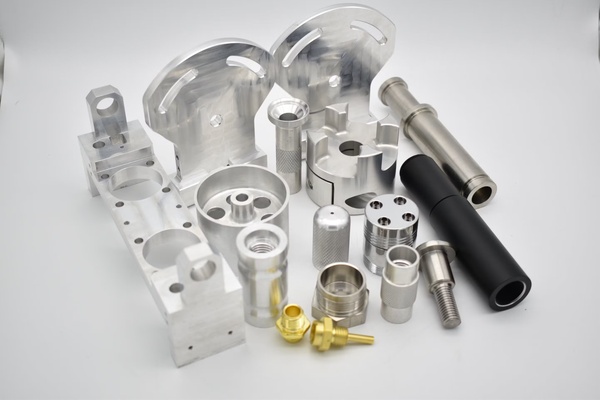Ceramic CNC Machining: Precision Solutions for Advanced Engineering Applications
Ceramic CNC machining has become one of the most advanced manufacturing technologies for producing high-performance ceramic components used in aerospace, electronics, medical devices, automotive systems, and industrial machinery. Unlike metals or plastics, ceramics offer exceptional hardness, heat resistance, chemical stability, and electrical insulation. These unique material properties make ceramics ideal for high-stress environments—yet they also make machining far more challenging.
Today, with advancements in multi-axis CNC machine tools, diamond tooling, and coolant delivery systems, ceramic CNC machining has evolved from a niche specialty into a reliable and repeatable method for producing highly precise and complex ceramic components.
This article explores the techniques, challenges, and benefits of ceramic CNC machining, including ceramic CNC milling, ceramic CNC cutting, the precision ceramic machining standards required in advanced industries, and the complete ceramic machining process. It also answers a key question many engineers ask: Can ceramic be machined?

What Is Ceramic CNC Machining and Why It Matters
At its core, ceramic CNC machining refers to the use of computer-controlled cutting tools to shape advanced ceramics such as alumina, zirconia, silicon carbide, and boron nitride. These materials are extremely hard—sometimes even harder than steel—requiring specialized diamond-coated tools and carefully controlled feed rates.
Key advantages include:
- Ultra-high precision (±0.001 mm in some cases)
- Excellent repeatability for mass production
- Complex geometry capability, including micro-holes and intricate channels
- Superior surface finish that often reduces post-processing
- Compatibility with high-temperature and corrosive environments
Because ceramics cannot be formed through conventional machining methods alone, ceramic CNC machining is essential for producing aerospace insulators, semiconductor components, dental implants, wear-resistant bearings, and microfluidic parts.
Ceramic CNC Milling — High-Accuracy Machining of Hard Materials
One of the primary machining techniques used in this industry is ceramic CNC milling. Milling is vital for creating flat surfaces, pockets, slots, and multi-axis geometries. Unlike metal milling, which uses carbide tools, ceramic milling requires:
- Diamond-coated end mills
- Slow and steady tool engagement
- Low feed rates to reduce stress
- High spindle speeds for clean material removal
Ceramic CNC milling is especially effective for zirconia and alumina, which are commonly used in medical and electronic components. With 3-axis, 4-axis, and 5-axis CNC milling centers, manufacturers can achieve extremely tight tolerances while maintaining the material’s structural integrity.
This technique has transformed industries that demand micro-machined ceramic components with exact specifications.

Ceramic CNC Cutting for Extreme Hardness Applications
While milling removes material with multi-axis tools, ceramic CNC cutting focuses on:
- Profiling
- Slotting
- Trimming
- Surface shaping
Ceramics do not deform plastically like metals, which means fractures can propagate easily if cutting forces are too high. Therefore, ceramic CNC cutting always uses optimized parameters:
- Laser-guided tool paths
- Continuous coolant delivery
- Minimal mechanical shock
- Ultra-thin diamond cutting wheels
Applications of ceramic CNC cutting include:
- Micro-channels for electronics
- Probe components
- Substrates for semiconductors
- Aerospace heat shields
- High-temperature insulators
Because the cutting process must protect the ceramic’s micro-structure, precision and tool quality directly affect the finished component’s performance.
Precision Ceramic Machining — Meeting Tight Engineering Requirements
Many industries require extremely accurate ceramic components—often with tolerances tighter than those used in metal manufacturing. This is where precision ceramic machining becomes essential.
Precision machining ensures:
- Dimensional accuracy required for medical implants
- Surface finishes as smooth as Ra 0.2–0.4 μm
- Minimal micro-cracking
- Consistency in thermal performance
- Exact geometric tolerances for sealing and alignment
Precision ceramic machining is commonly used for:
- Fuel cell components
- High-frequency electronic substrates
- Optical fixtures
- High-speed bearing races
- Surgical tools and implants
For industries where failure is not an option, precision ceramic machining eliminates variability and guarantees long-term stability.

The Ceramic Machining Process — From Raw Material to Final Component
A complete ceramic machining process includes several stages to produce reliable components without compromising material strength.
1. Pre-processing and Shaping
Most ceramic machining begins with:
- Pressed blanks
- Extruded forms
- Green (un-sintered) ceramic bodies
- Sintered ceramic blocks
Green-body machining is easier but requires CNC knowledge of shrinkage rates during sintering.
2. CNC Milling and Cutting
During the machining phase, a combination of ceramic CNC milling and ceramic CNC cutting is used to shape the component. This includes drilling, slotting, contouring, surfacing, and edge finishing.
3. Surface Refinement
After machining, surfaces may require:
- Grinding
- Lapping
- Polishing
- Hone finishing
These processes ensure that the ceramic is defect-free and suitable for high-precision industries.
4. Cleaning and Quality Inspection
Because ceramics must meet strict engineering standards, the ceramic machining process ends with:
- CMM measurement
- Microscopic inspection
- Stress testing
- Surface roughness checks
Only after these tests can the final component be approved for use in critical applications.
Can Ceramic Be Machined? The Answer and Limitations
Many engineers ask: Can ceramic be machined?
The short answer is yes—but it requires specialized techniques.
Ceramics cannot be machined like metals because they:
- Are extremely hard
- Lack ductility
- Tend to crack under mechanical stress
- Produce fine abrasive dust
However, with diamond tooling, controlled tool paths, and optimized CNC parameters, ceramics can be precisely machined into nearly any shape.
When ceramics cannot be machined
- Excessively large parts
- Components with extreme thin-wall geometries
- Materials with ultra-brittle micro-structures
- Applications requiring deformation during machining
Still, for the majority of industrial uses, ceramic CNC machining provides exceptional accuracy and repeatability.
Applications of Ceramic CNC Machining Across Industries
Ceramics machined by CNC are used in:
- Semiconductor wafers and substrates
- Medical implants and dental prosthetics
- High-temperature aerospace components
- Wear-resistant guides, bushings, and bearings
- Industrial nozzles and pumps
- Laser and optical equipment
The combination of lightweight durability, heat resistance, and electrical insulation makes ceramic CNC machining a solution for industries that require long-lasting, high-performance components.
Conclusion
Ceramic CNC machining is a transformative manufacturing technology that enables the creation of high-precision ceramic components for modern industries. With advanced tools and methodologies—such as ceramic CNC milling, ceramic CNC cutting, and precision ceramic machining—engineers can achieve unmatched accuracy, durability, and consistency.
Understanding the full ceramic machining process and knowing the answer to can ceramic be machined empowers manufacturers to use ceramics to their fullest potential. As industries continue to demand stronger, lighter, and more heat-resistant components, ceramic CNC machining will remain a core technology shaping the future of engineering.
Xavier is a professional manufacturer specializing in ceramic cnc machining, offering high-precision machining solutions for clients worldwide. We focus on custom CNC production for a wide range of metal and engineering materials. Our capabilities cover CNC machining aluminum, CNC machining stainless steel, CNC machining magnesium alloy, CNC machining acrylic, CNC machining ABS, and CNC machining plastics, ensuring excellent versatility for complex projects.
We also provide precision machining for advanced sectors, including CNC robotics parts machining, CNC aerospace components machining, CNC automotive parts machining, and CNC medical components machining, delivering stable quality, fast turnaround, and strict dimensional accuracy.
To meet diverse surface requirements, we support multiple post-processing techniques such as sandblasting, hard anodizing, micro-arc oxidation, grinding, polishing, painting, black oxide, electroplating, vacuum coating, chemical plating, phosphating, passivation, silk-screen printing, and texture etching. Surface finishing options include anodizing, electroless nickel plating, zinc electroplating, passivation, and electropolishing.
Our machining services include 5 axis milling, CNC milling services, CNC turning services, and Swiss turning services.
As a global ceramic cnc machining supplier, Xavier supports both small-batch and large-volume CNC production. If you need to check ceramic cnc machining service pricing or request a quote, feel free to contact us anytime.
Some content in this article comes from the internet. If there is anything inappropriate, please contact us for processing.